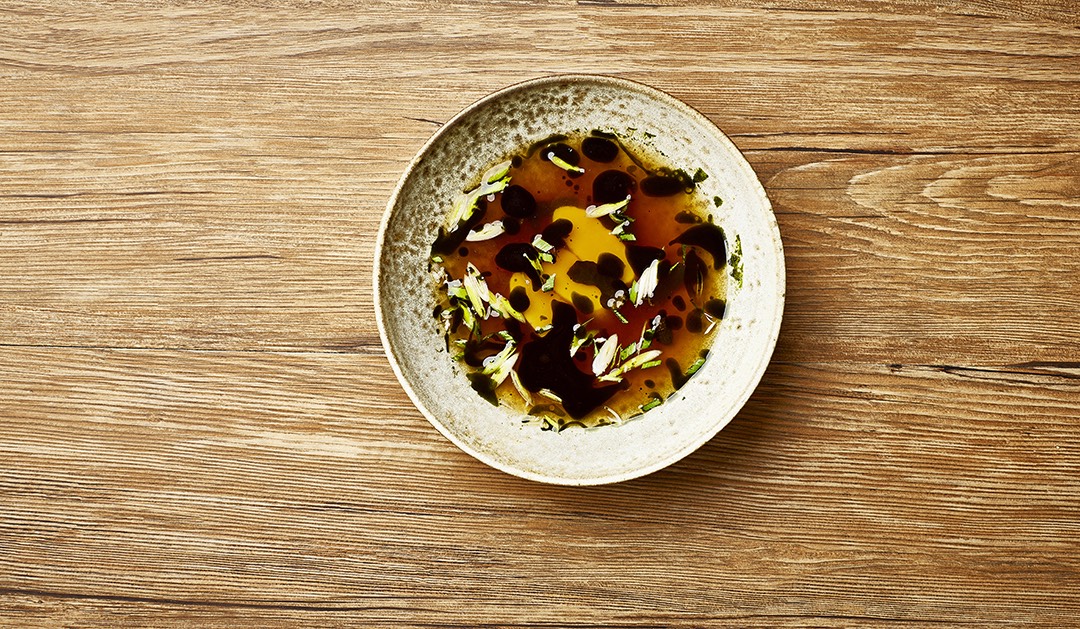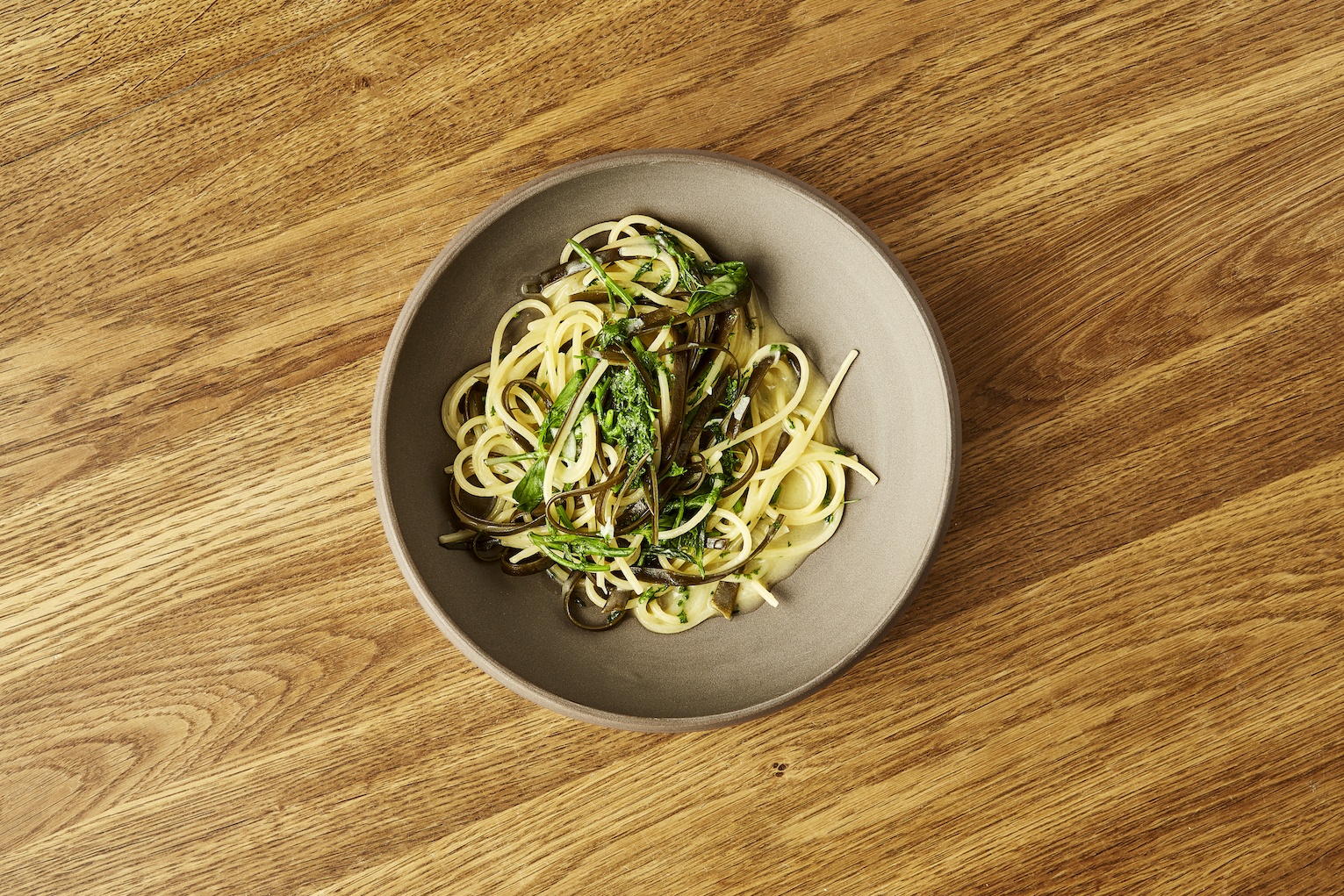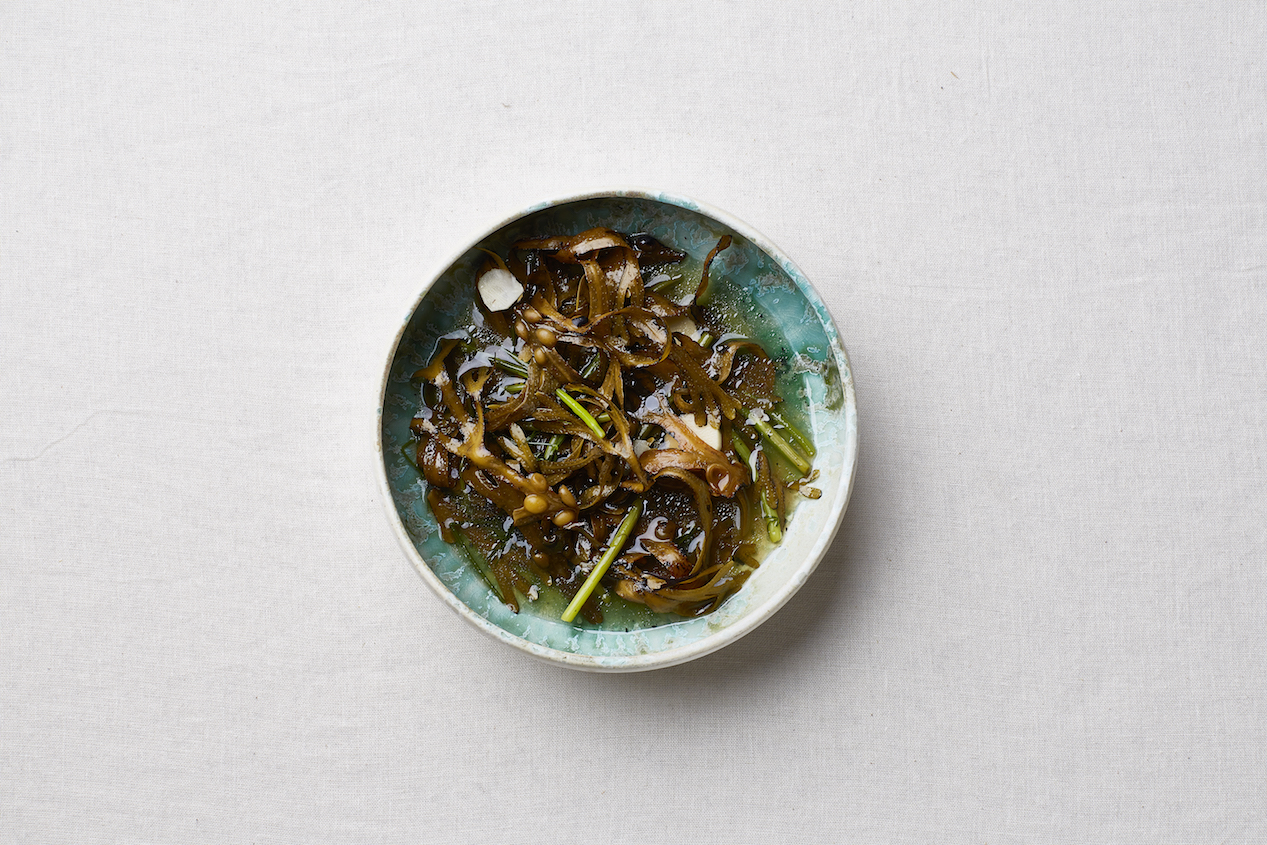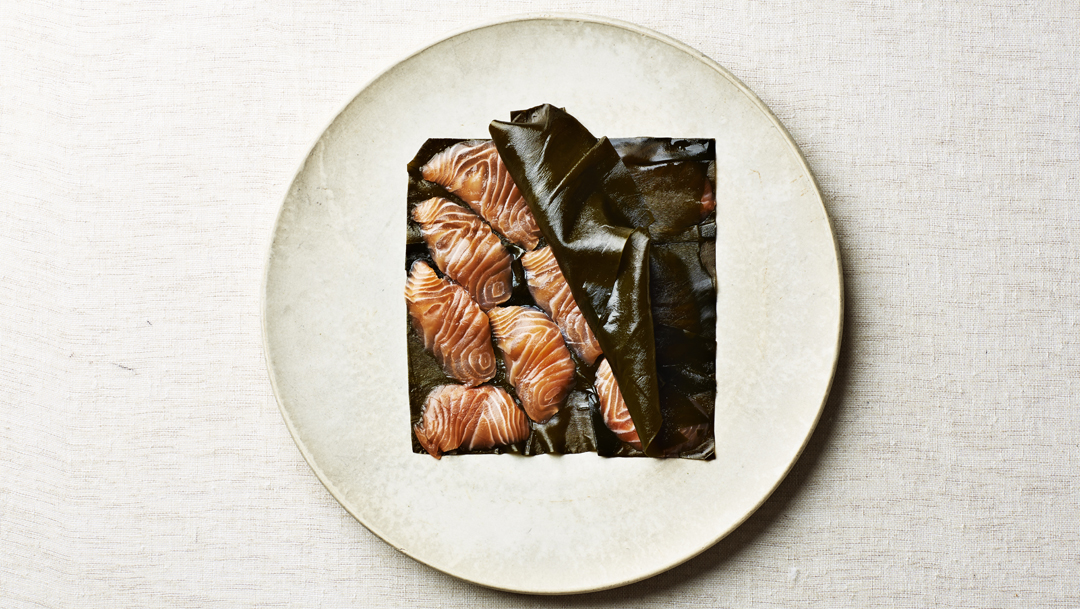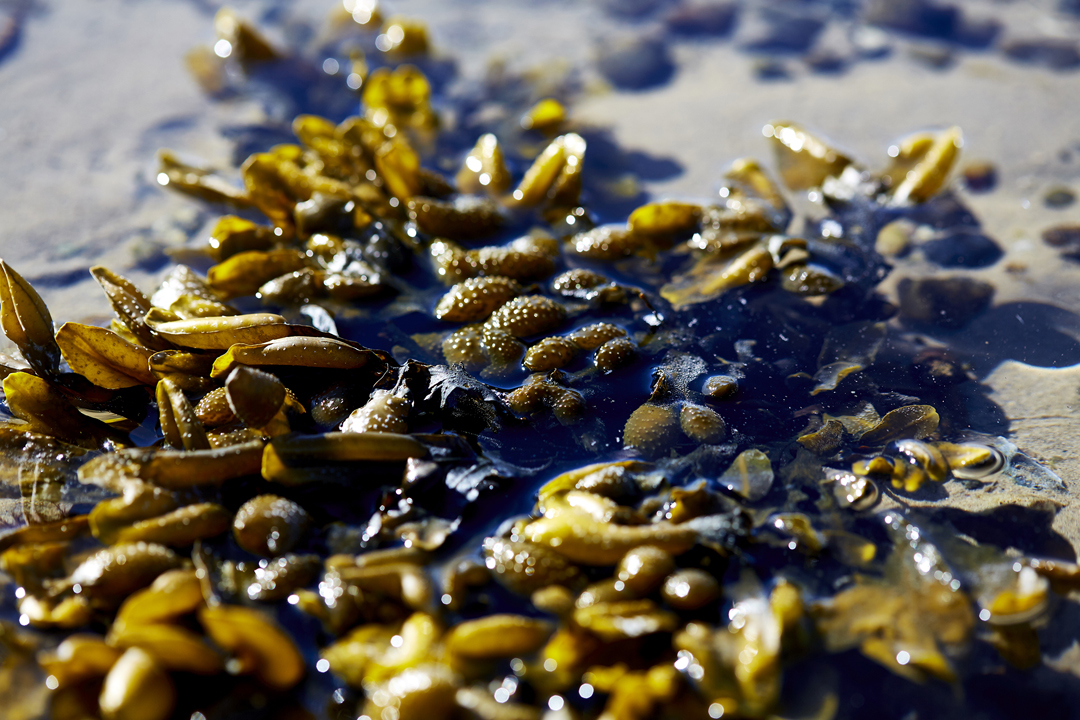
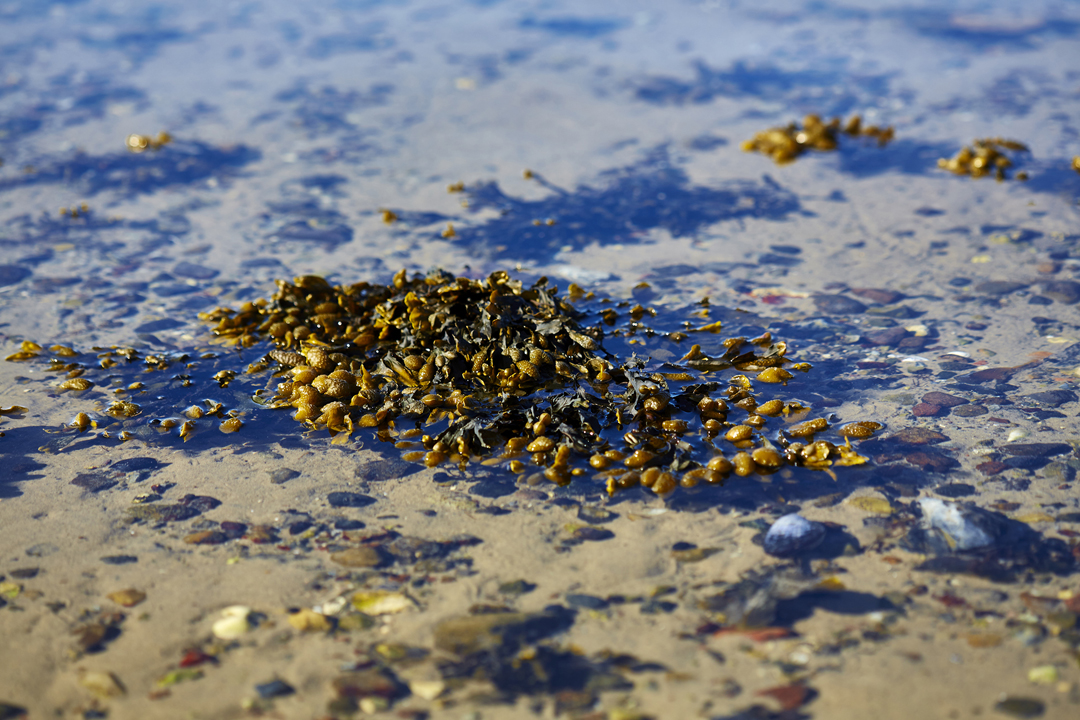
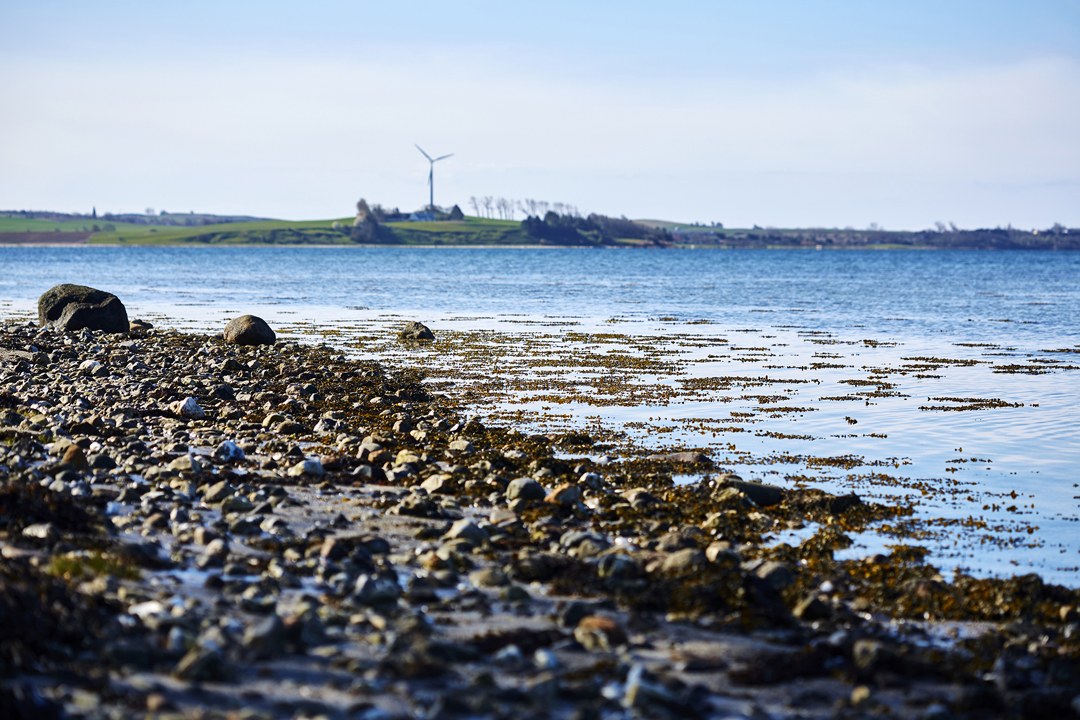
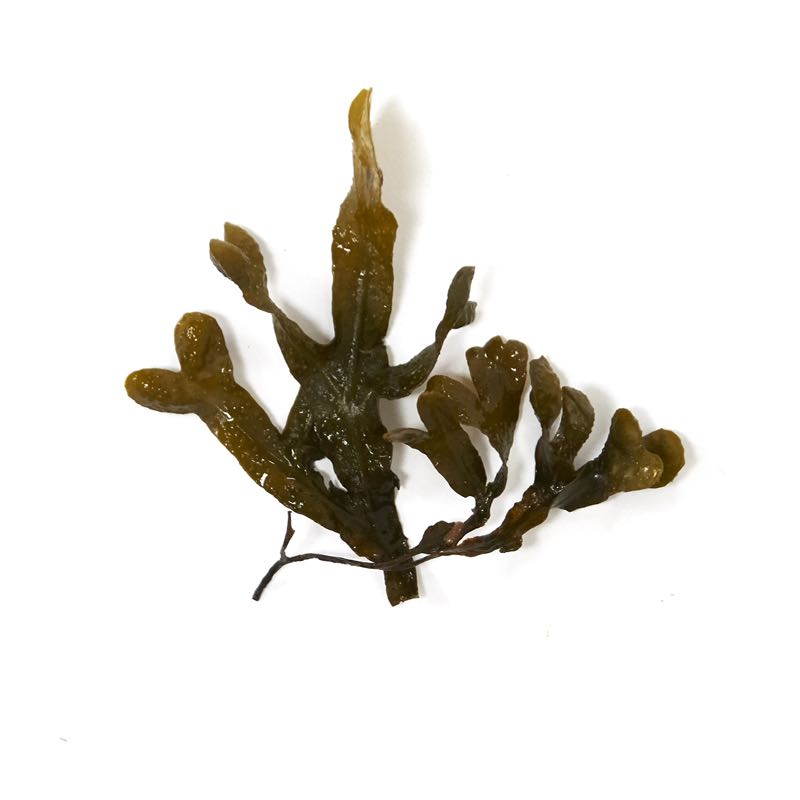
Bladderwrack
All along the Danish coast, you’re sure to find bladderwrack washed ashore. The brown kelp may be the bane of swimmers, but it’s also one of the tastiest and most easily procured varieties of seaweed.
-
Where to Find It
Bladderwrack helps maintain the proper balance of sunlight, salt, and nutrients in the water. It can be found along many shores in Denmark, where it often washes onto the beach in large, brown mats. Live bladderwrack attaches itself to rocks or shells, and prefers to grow near the coast, but it can also thrive further at sea among billowing kelp forests that can grow up to one meter high.
The beach.
-
When to Find It
Bladderwrack can be harvested year round, but spring, when the seaweed is fresh, is the best season to collect it. Later in the year, it dies, and begins to collect mineral deposits.
Top shoots: March, April, May, June.
-
How to Spot It
Bladderwrack is a type of brown algae that grows up to 70 cm long and anchors itself to rocks with the small, suction-cup-like pads at its base. Once anchored, it shoots towards the surface, carried by the air-filled bladders that grow along its leafy extensions, called fronds, that fork into branches. Fruit bodies form at the very tip of the fronds; in spring these can look like large, heart-shaped eggs. The bladderwrack stores its seeds in these fruit bodies.
-
How to Pick It
Large piles of bladderwrack on the beach have been ripped from their beds by storms or strong currents. It’s best, then, to avoid the washed-up wrack and direct your attention instead to the live kelp that grow along the shore. There may be barnacles, algae or other growths on the bladderwrack, so focus on the nicest, cleanest specimens you can find, and remove the outer shoot with scissors or a knife—this way you'll be left with the best-tasting part. Low tide makes it easier to reach live algae, but you can also dive for bladderwrack; it can grow 5 to 6 meters below the surface. Once summer’s long hours of sunlight recede, so will the bladderwrack.
Risk of misidentifying the plant
There is no risk of mistaking the plant for another dangerous or undesirable plant.


